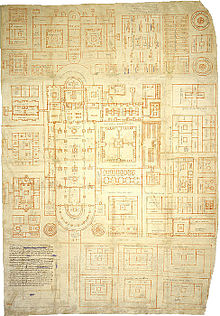facsimile


The facsimile ( Latin: fac simile "make it similar"; plural: facsimiles or facsimilia ) is a faithful replica or reproduction of a template , often in the case of historically valuable printed or handwritten documents . In the past, printing processes such as lithographic reproduction or anastatic printing were predominantly used, and today mainly photographic processes. A good facsimile corresponds to the original in size, color and condition. Facsimiles are handcrafted in engraving processes such as wood engraving . The technically complex, grid-free light pressure earlier gave the best results, but is hardly used today after digital reproduction techniques have prevailed.
Facsimiles are relatively expensive due to the high cost of production (which often includes a replica of the original cover ). Therefore, in addition to the complete and faithful facsimile of a certain original, some publishers also produce reduced or otherwise simplified versions; Partial facsimiles, for example only reproducing illustrations , are also common. You will then get cheaper prices, e.g. B. offered as a study edition .
In earlier times, printed facsimiles were the only way to make valuable manuscripts true to the original accessible to research, so that they were acquired by libraries and research institutes. Today this is increasingly done through digitization , so that facsimiles are more likely to find their way into the circle of lovers and collectors.
The term facsimile is also used to refer to the electronic images of documents that have been scanned into document management , archive or enterprise content management systems . The term fax for a fax transmission is also derived from facsimile.
A reproduction of the pure text in a layout that is not true to the original is called a reprint .
Historical documents
If the original has been lost or is too valuable to be exhibited, the facsimile offers the opportunity to make a historically significant document available to the public and research . This applies, for example, to medieval manuscripts with book illuminations , and more rarely to documents or manuscripts of literary texts. In doing so, the specialized book printing companies strive for the maximum possible degree of perfection in order to make the facsimile as similar as possible to the original. Not only the use of old hand tools and old techniques ensures a replica that is as true to the original as possible, but also the most modern scanning and photo technology is used. Then as now, these books are a sign of the manufacturing skills of their time. In the case of manuscripts that have a valuable binding, attempts are often made to reproduce it as true to the original as possible, for example casts of carved reliefs made of ivory or replicas of goldsmithing work are mounted on the binding .
The facsimiles are usually accompanied by scientific commentary volumes with explanations that provide information about the history and meaning of the original.
Postage stamps

In philately , imitations of rare stamps from private sources are referred to as facsimiles. However, this imitation must differ from the original, otherwise it would be illegal forgeries . Simply marking the back as a facsimile is not sufficient. The difference can occur in the stamp paper used , in the color, in the perforation or in the printing process . A facsimile is a postage stamp only similar to the original.
If the production of facsimiles of postage stamps takes place under government order, this is called reprinting . These are not made with the original printing block. The philatelist refers to stamps that are produced with the original printing blocks or printing plates after their postage validity has expired as reprints .
Manufacturing
Preferred facsimile techniques are wood engraving, collotype printing, and photomechanical reprinting. By means of retro digitization , facsimiles are increasingly being created in electronic form. The granolithography especially gives good results.
Facsimile signature
As a facsimile signature is a signature designated, which is printed. This is often intended to give the reader the impression that the sender signed it personally, for example in the case of advertising letters. Whether facsimile signatures are legally valid depends on the legal system of the country and on the special circumstances of the individual case.